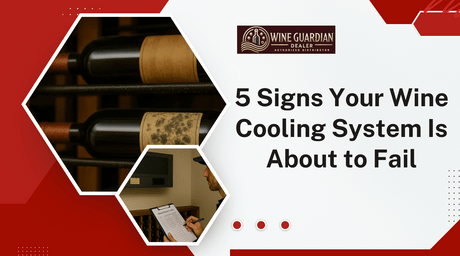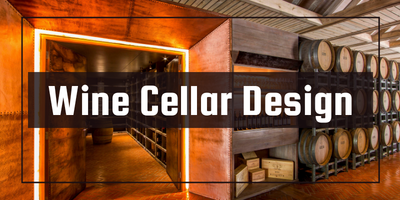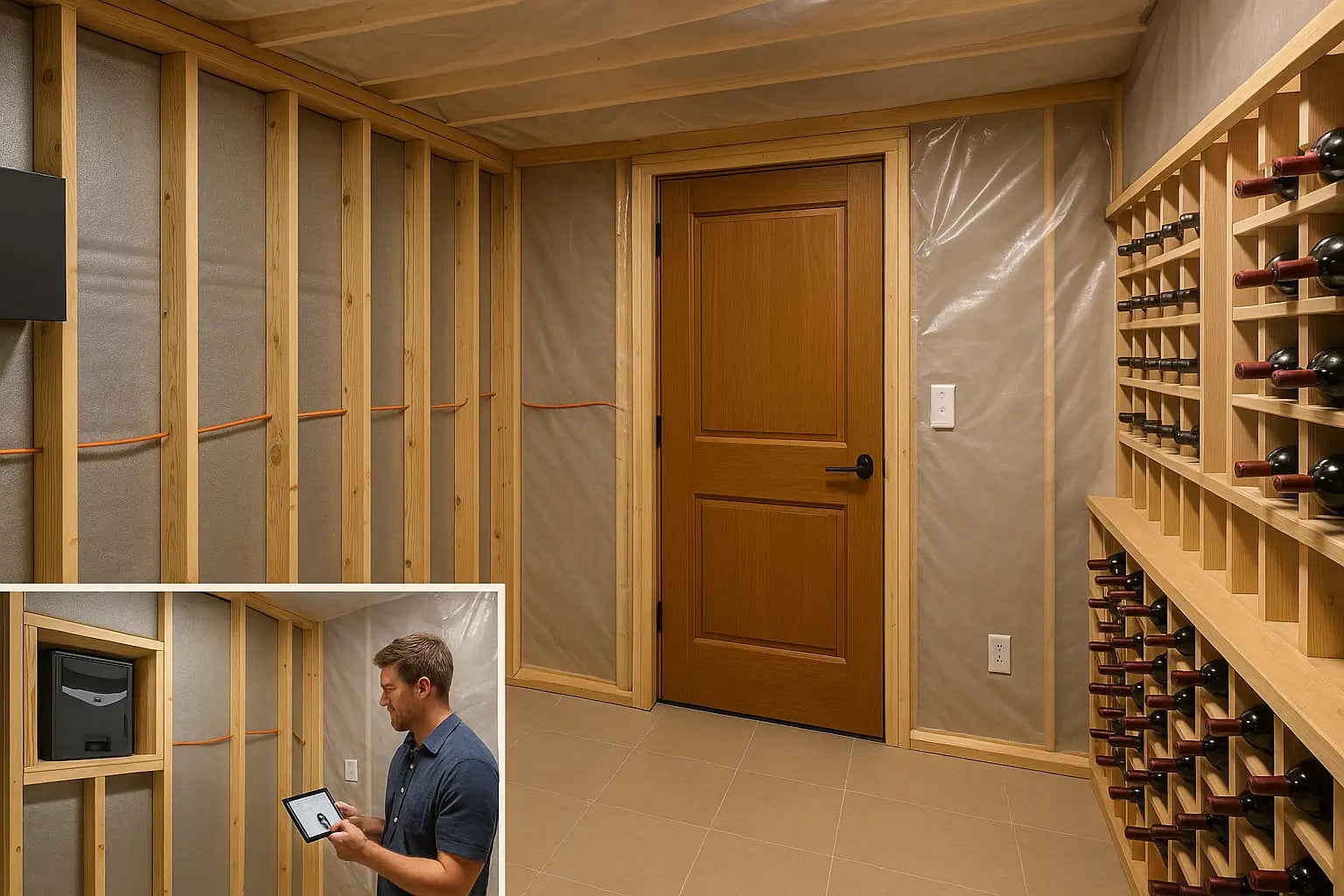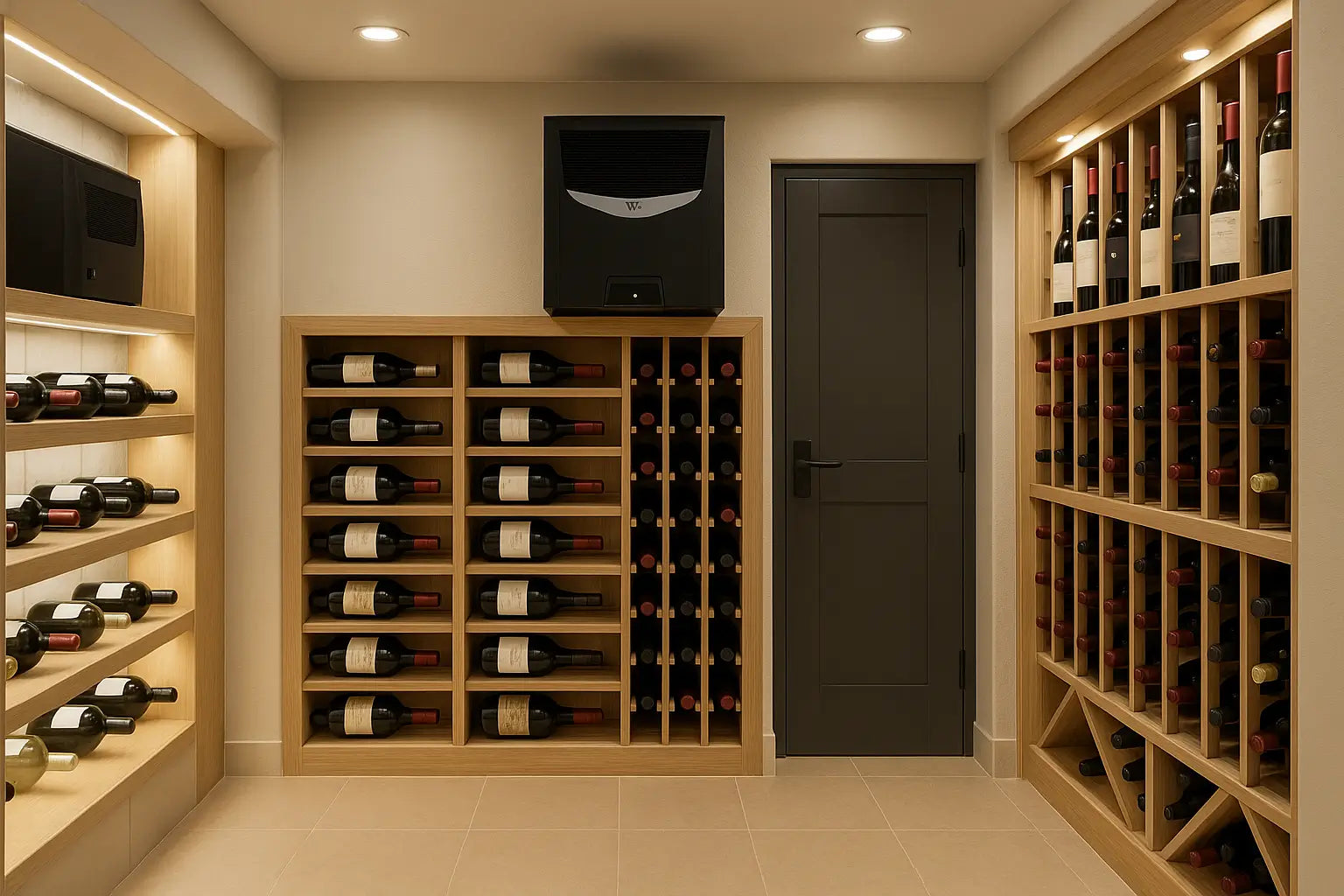
5 Signs Your Wine Cooling System Is About to Fail
Don’t wait for a costly surprise. Wine Guardian Dealer breaks down the top 5 signs your wine cooling system may be failing — and how to fix it before damage...
Jim Hopper
In Stock & Ready to Ship – Order Your Wine Cooling System Today!
Free Wine Cellar Expert Consultation | 📞 Call 1-800-260-1712
Start with a free expert consult—cooling system sizing, racking options, and no upsells.

Build your dream wine cellar—without costly mistakes or guesswork.
By Jim Hopper, Wine Cooling Expert
A well-designed wine cellar is more than just a storage space—it’s a controlled environment that preserves the flavor, aroma, and aging process of your wine collection. Wine cellars should be located in cool, dry areas of your home, with no natural light, no vibrations, no unwanted smells, and a controlled temperature.
Whether you're a serious collector, a casual wine enthusiast, or a homeowner planning a DIY wine cellar, this guide provides expert insights, tips, and solutions to your most pressing questions. For complete planning strategies and inspiration, visit our full Wine Cellar Design and Installation: Build a Beautiful, Functional Wine Room That Lasts.

A properly designed wine cellar offers numerous advantages:
💡 Thinking about starting your wine cellar? Get a free consultation with our wine storage experts!
📢 Don’t wait! Start designing your custom wine cellar today!
💡 Not sure where to install your wine cellar? Speak to our experts for personalized recommendations!
📢 Find the perfect spot for your wine cellar!
Before building your wine cellar, check with your local building office to determine if a permit is required. Permits are necessary to ensure compliance with local, state, and national building codes. Not all projects require a permit, but it’s best to check to avoid any potential issues. Ensuring you have the proper permits can save you from costly fines and ensure your wine cellar is built to the highest standards. Additionally, consider using closed cell foam insulation, as it is the best choice for wine cellars to control humidity and prevent moisture from accumulating on the walls.
✅ Temperature: 50-60°F (10-15°C) ❄️ Maintaining a constant temperature is crucial for preserving the quality and longevity of your wine collection. Fluctuations in temperature can cause the wine to expand and contract, potentially damaging the cork and allowing air to seep into the bottle. This can lead to oxidation and spoilage, compromising the wine's flavor and aroma. A reliable cooling system is essential to ensure that your wine cellar remains within the optimal temperature range, protecting your investment and enhancing the aging process.
✅ Humidity: 50-70% 💦 Humidity levels play a significant role in wine preservation. If the air is too dry, corks can shrink, allowing air to enter the bottle and spoil the wine. Conversely, excessive humidity can lead to mold growth on labels and corks, as well as unpleasant odors. By maintaining the ideal humidity range, you ensure that corks remain moist and airtight, preserving the integrity of your wine collection. Consider investing in a hygrometer to monitor humidity levels and a humidification system to maintain them.
✅ Ventilation: Proper air circulation prevents mold and musty odors. Good ventilation is vital for preventing the buildup of mold and musty odors in your wine cellar. Without adequate airflow, stagnant air can lead to condensation and moisture accumulation, creating an environment conducive to mold growth. Proper ventilation ensures that fresh air circulates throughout the cellar, keeping it dry and odor-free. This not only protects your wine but also maintains a pleasant atmosphere for you and your guests.
🔹 Protect your wines with the best cooling systems! Shop Now 🔹
📢 Ensure perfect wine storage conditions! Explore our climate control solutions!

When it comes to preserving your wine collection, selecting the right wine cellar cooling units is crucial. Each type of cooling unit offers distinct advantages, catering to different needs and cellar sizes. Undersizing a wine cellar cooling unit can lead to premature failure and increased energy costs, so it’s essential to choose a unit that matches your cellar’s requirements. Here’s a detailed comparison to help you decide:
|
Cooling System Type |
Installation |
Best For |
|---|---|---|
|
Self-contained |
Easy setup |
Small cellars |
|
Ducted |
Quiet, hidden unit |
Mid to large-sized cellars |
|
Split system |
Precise climate control |
Advanced collectors |
Self-contained systems are compact and easy to install, making them ideal for smaller wine cellars. These units are all-in-one, meaning they house both the evaporator and the condenser in a single package. This design simplifies installation and maintenance, as there are fewer components to manage. However, they may not be suitable for larger cellars due to their limited cooling capacity.
Ducted systems are perfect for those who desire a quiet and unobtrusive cooling solution. By placing the cooling unit in a separate location and using ducts to circulate air, these systems minimize noise and maintain the aesthetics of your wine cellar. They are well-suited for mid to large-sized cellars, providing consistent temperature and humidity control without disrupting the cellar's ambiance.
For serious wine collectors seeking precise climate control, split systems are the go-to choice. These systems separate the evaporator and condenser, allowing for more flexible installation options and efficient operation. Split systems offer superior control over temperature and humidity, essential for preserving valuable wine collections. They are best suited for advanced collectors with larger cellars or those requiring specific climate conditions.
💡 Find the right cooling unit for your cellar! Explore Wine Guardian’s solutions
When selecting a cooling unit for your wine cellar, consider the following factors to ensure your wine collection is stored under ideal conditions:
🔹 Cellar Size: Determine the size of your wine cellar to choose the appropriate cooling unit.
🔹 Climate Control Needs: Assess the level of climate control you require for temperature and humidity.
🔹 Budget: Consider your budget when selecting a cooling system.
🍷 Self-Contained Units:
🍷 Ducted Systems:
🍷 Split Systems:
No matter your needs, Wine Guardian's solutions provide reliable and efficient options to protect your wine investment. Explore their range to find the perfect match for your cellar and ensure your wines are stored in optimal conditions.
📢 Get expert advice on selecting the best cooling system!
Choosing the right cooling system for your wine cellar is a crucial step in ensuring the longevity and quality of your wine collection. With various options available, it can be challenging to determine which system best suits your specific needs. Our specialists are here to provide you with tailored advice, considering factors such as the size of your wine cellar, your budget, and the level of climate control you require.
Don't leave your wine storage to chance—reach out to our specialists today for comprehensive advice and support in selecting the ideal cooling system for your wine cellar. Secure the future of your wine
💡 Find the right cooling unit for your cellar! Explore Wine Guardian’s solutions
Selecting the appropriate cooling unit is a critical step in wine cellar building, as it ensures that your wine collection is stored under ideal conditions. Here's a simplified guide to help you choose the right cooling unit:
🍷 Key Considerations:
🔹 Cooling Unit Options:
Self-Contained Units:
Ducted Systems:
Split Systems:
🔸 Factors to Consider:
🔹 Insulation & Sealing:
By exploring Wine Guardian's range of solutions, you can find the perfect match for your cellar, ensuring your wines are stored in optimal conditions and protected from the outside temperature and other environmental factors. Don't hesitate to reach out to their specialists for tailored advice and support in selecting the best cooling system for your wine cellar space.
📢 Get expert advice on selecting the best cooling system! Talk to our specialists!

Building a wine cellar is an exciting endeavor that combines functionality with aesthetics. The process involves careful planning and attention to detail to ensure that your wine collection is stored in ideal conditions. From selecting the right location and materials to designing the layout and installing the necessary equipment, every step plays a crucial role in the success of your wine cellar project.
Choosing the right construction materials is essential for creating a wine cellar that maintains consistent temperature and humidity levels. An exterior grade door is crucial for proper sealing and insulation, as it provides the required resistance to air flow and ensures optimal wine storage. Additionally, using high-quality materials for walls, floors, and ceilings will help in maintaining the desired climate conditions.
Proper insulation and vapor barriers are vital for regulating temperature and humidity in your wine cellar. Wine cellar insulation, such as closed cell foam, is recommended to prevent moisture issues and ensure energy efficiency. Selecting the right insulation materials and R-values will contribute to the overall performance and longevity of your wine cellar.
💡 Need help designing your dream wine cellar?
📢 Start your wine cellar project today!
Furring is the process of installing strips of wood to raise surfaces or prevent dampness. For framing wine cellar walls, use 2x6 framing lumber to improve energy efficiency. This allows for thicker insulation, which is crucial for maintaining a constant temperature. Use 2x10 framing lumber for the ceiling to install R-30 insulation, providing excellent thermal resistance. Pressure-treated lumber is a good choice for building from the ground up to prevent rot, especially in areas prone to moisture.
The best door for a wine cellar is one that provides proper sealing and insulation. Single-pane glass doors provide little to no insulation value and can lead to temperature fluctuations. Framed glass doors with dual-pane glass are a better option, offering improved insulation while still allowing you to showcase your collection. Exterior-grade doors are a good alternative if a wine cellar door is not feasible. Ensure the door is properly sealed to maintain optimal storage conditions, preventing air leaks that could compromise the environment inside your cellar.

When installing lighting in your wine cellar, choose options that are airtight and UV-free to prevent damage to your wine. Consider these options:
For racking, select a system that fits your wine collection and storage needs. Custom wine racks add a personal touch to your wine cellar and can accommodate various bottle sizes and shapes. Keep in mind:
Remember to prime and paint your walls with a water-based, zero VOC exterior-grade paint to withstand high humidity. This type of paint is durable and resistant to mold and mildew, making it ideal for the wine cellar environment.
💡 Upgrade your wine cellar with stylish racks! Browse top-rated wine storage solutions.
Choosing the right wine racks is crucial for both organization and style in your wine cellar. Stylish racks not only keep your collection orderly but also enhance the cellar’s aesthetics. Properly designed racks help you store wine efficiently, ensuring that each bottle is maintained in optimal conditions. Consider modular racks for flexibility and wall-mounted options to maximize space. Traditional wooden racks offer a classic look, while metal racks provide a modern touch. Ensure your racks securely support bottles and accommodate various sizes. Investing in quality wine racks elevates your cellar’s appearance and functionality.
📢 Get the perfect wine storage solution! Shop wine racks now!

💡 Protect your investment!
Maintaining your wine cellar is essential for preserving the longevity and quality of your wine collection. Regular maintenance checks can help detect potential issues with your cooling units, insulation, and humidity levels, preventing expensive repairs and ensuring the ideal conditions for your wines. Here are some key maintenance tips to keep your wine cellar in top condition:
By following these maintenance tips, you can protect your investment and enjoy your wine collection for years to come. For more detailed guidance, consider consulting with a wine storage expert who can provide tailored advice based on your specific cellar setup.
📢 Keep your wine cellar in top shape!
✅ Ready to start your wine cellar journey? Shop Wine Guardian Cooling Units Now! ✅ Need expert guidance? Get a free consultation today!
📢 Turn your dream wine cellar into reality! Take the first step now!
📢 Have more questions? Contact our wine storage experts!
📢 Unlock expert wine storage advice! Chat with a specialist today!
For those looking to delve deeper into the intricacies of wine cellar construction and maintenance, here are some authoritative resources to explore:
These resources provide valuable information for both novice and experienced wine collectors, helping you make informed decisions about your wine cellar. Whether you're looking for advice on cooling units, insulation, or wine racks, these sites offer a wealth of knowledge to ensure your wine collection is stored in ideal conditions.
Avoid single-pane glass, poor sealing, and areas with direct sunlight — all can compromise temperature control and wine quality.
Yes — it prevents moisture issues and helps maintain stable humidity for cork preservation.
Absolutely. It protects your collection and can increase your home’s value and appeal.
Yes — closets, under-stair areas, and pantries can become fully functional cellars with proper insulation and cooling.
🛒Shop our most-loved Wine Guardian cooling systems today.
🛠️Protect your wine with the most trusted systems on the market.
❤️Tested, reviewed, and loved by serious collectors like you.